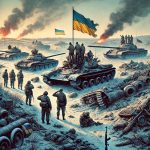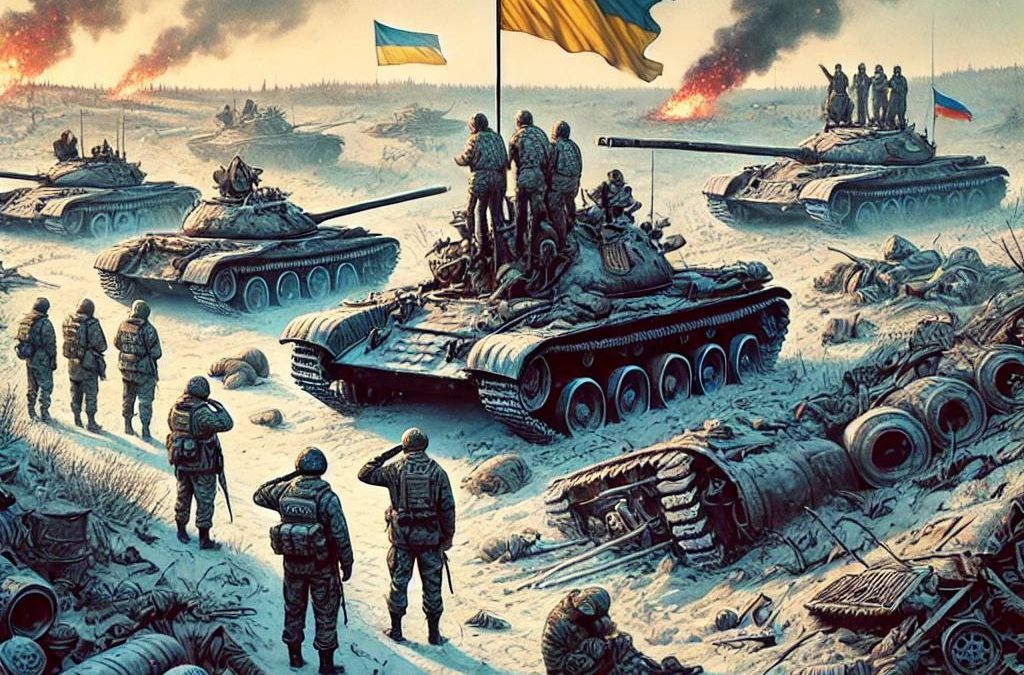
Справжня ціна свободи: підтримка боротьби України за незалежність, безпеку та мир
November 13, 2024
Оцінка Втрат Росії у Війні з Україною: Чи Є Вони Стійкими?
November 14, 2024The ongoing war in Ukraine has brought significant attention to the mounting losses faced by Russian forces. These losses extend from personnel casualties to substantial damage to military equipment such as tanks, armored vehicles, and aircraft. Recent figures show that Russia’s losses are escalating, raising questions about whether these are sustainable in the long term and what this means for the future of the conflict. Using recent data and graphs that highlight these trends, we can gain deeper insights into the sustainability of Russia’s military operations and the implications for Ukraine’s defense.
The Scale of Russian Losses in Numbers
Data points indicate that Russian casualties in the war are rising at an alarming rate, with some estimates suggesting tens of thousands of soldiers have been killed or severely wounded. Additionally, the losses in military hardware are significant. Reports point to the destruction of over 2,000 tanks and thousands of other vehicles and pieces of equipment. This rate of loss surpasses what Russia has experienced in any recent military engagement and raises questions about the sustainability of their efforts.
Graphs depicting these statistics reveal a troubling trend: Russia’s capacity to sustain high-intensity conflict is under serious pressure. The sheer scale of lost equipment—including tanks, armored carriers, and aircraft—outpaces production and replacement rates. Although Russia has a history of maintaining stockpiles of equipment, the rate at which it is being depleted could soon outstrip its ability to replenish it.
Evaluating the Sustainability of Losses
Analyzing whether these losses can be sustained requires a multifaceted approach, taking into account several crucial factors:
- Military Production and Logistics: While Russia has an established defense industry capable of producing tanks, aircraft, and other military vehicles, there is a notable lag between production and field readiness. Data suggests that even with maximum output, current production levels cannot keep pace with the current rate of losses. This deficit could lead to gaps in operational capacity and weaken frontline strength over time.
- Human Resources and Morale: The graph data also highlights the steep rise in troop casualties. These figures are not just numbers—they represent significant morale and social impacts. While the Russian government has relied on a combination of conscription and contract soldiers, the continuous loss of personnel is likely to strain recruitment efforts. Public opinion, often controlled through state narratives, may reach a tipping point as families increasingly feel the direct impact of these losses.
- Economic Strain and Financial Pressure: The economic data points related to the war effort show a country under financial duress. Western sanctions have placed considerable pressure on Russia’s economy, affecting everything from foreign investment to domestic inflation. Sustaining a war effort with such economic strain is an added challenge that could force Russia to reallocate resources away from military endeavors, affecting their ability to replace lost equipment and fund prolonged conflict.
- Strategic and Tactical Shifts: The combined effect of personnel and equipment losses, along with economic pressure, could compel Russia to shift its military strategy. Instead of large-scale offensives, they might opt for more defensive or asymmetric warfare, which would require fewer resources and personnel. This shift could have profound implications for the pace and focus of the conflict.
Implications for Ukraine
While Russia grapples with mounting losses, Ukraine remains steadfast in its defense. The continuous pressure on Russian resources and morale provides strategic opportunities for Ukraine to gain ground, but this is contingent on sustained support from international allies. The supply of military aid, economic assistance, and humanitarian support plays a crucial role in enabling Ukraine to maintain momentum and capitalize on any weakening in the Russian offensive.
The resilience and determination shown by Ukraine are commendable, but the nation still needs resources to sustain its efforts. This is where international solidarity becomes vital. The potential weakening of Russia’s capacity to continue at the current level presents Ukraine with a chance to solidify its defensive and offensive strategies.
Support Ukraine’s Fight for Freedom and Peace
The ongoing conflict in Ukraine is not just about territory—it’s about defending the principles of sovereignty and peace in the face of aggression. The sustainability of Russia’s losses may eventually alter the trajectory of the war, but continuous support for Ukraine is essential to seize any opportunities that arise.
One way you can support Ukraine is by contributing to initiatives that provide direct aid and resources. Visit UkraineBoost to purchase products that help fund Ukraine’s defense efforts, humanitarian aid, and rebuilding initiatives. Your support helps sustain Ukraine’s fight for freedom, security, and peace.


